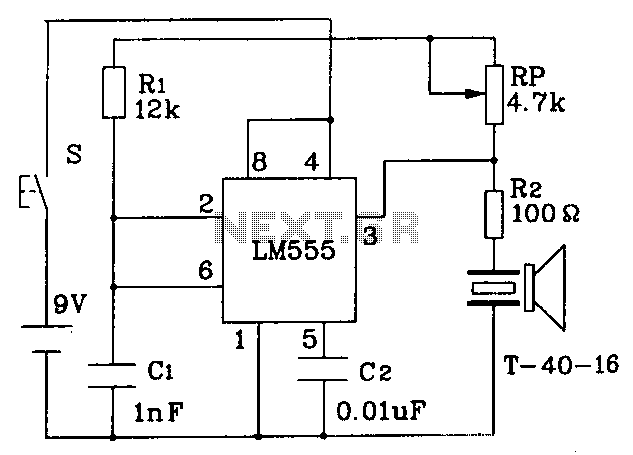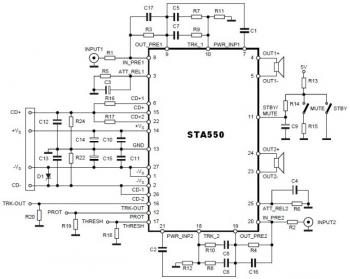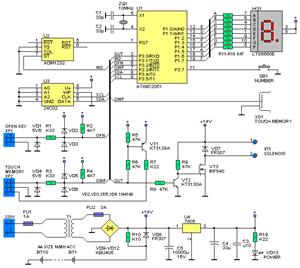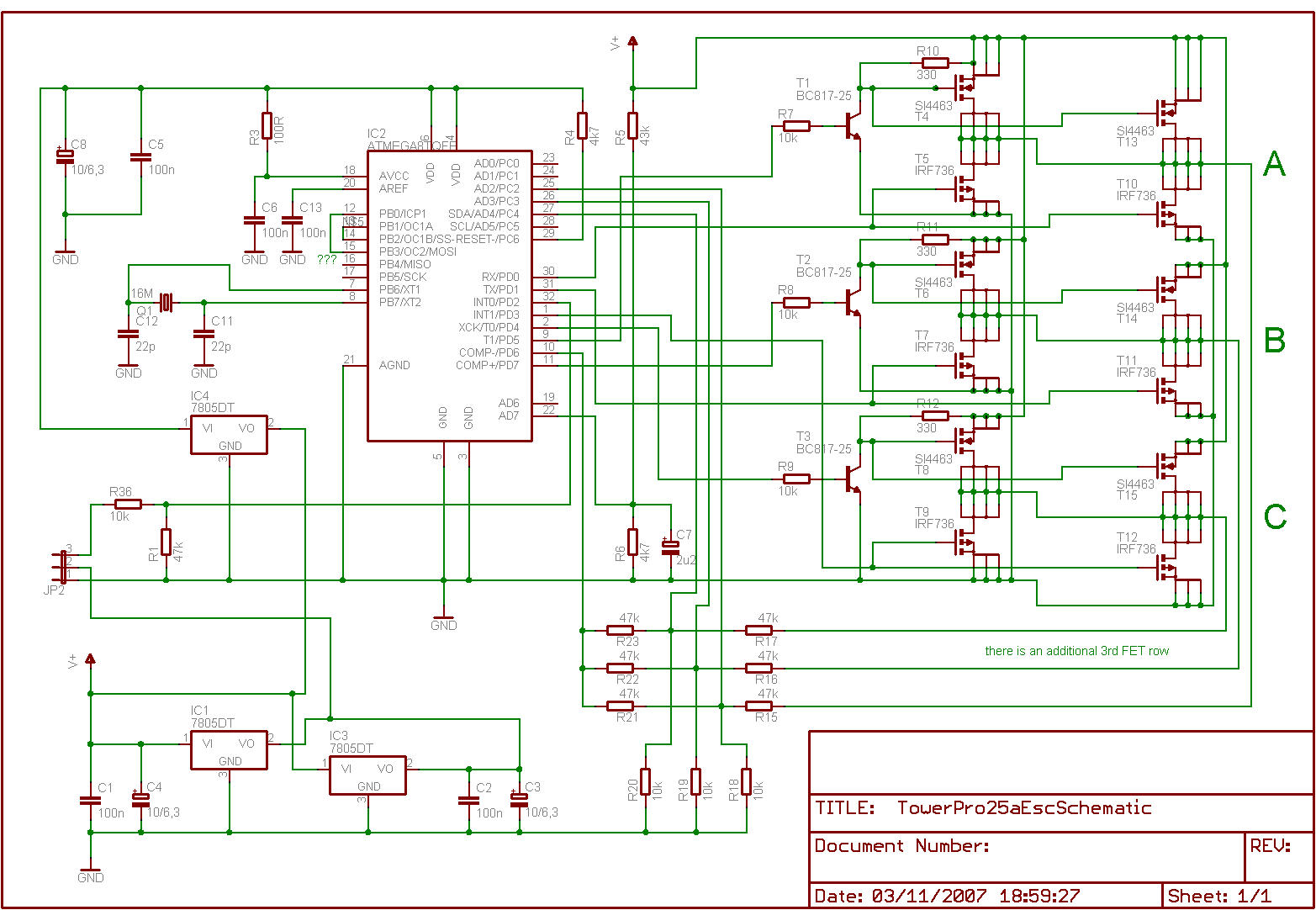
555 constitute an ultrasonic transmitter circuit diagram

The circuit operates at a distance of 3 feet from the oscillating pulse output of a 555 timer generating a 40kHz signal, driving a T-40-16 transducer to emit ultrasonic signals at the same frequency. The circuit is powered by a 9V supply and consumes an operating current of 40 to 45mA, with a control distance exceeding 8 meters.
The ultrasonic transmitter circuit utilizes a 555 timer IC configured in astable mode to produce a continuous square wave output at 40kHz. This frequency is suitable for ultrasonic applications, such as distance measurement or pest deterrence. The 555 timer is powered by a 9V DC supply, which is connected to the VCC pin of the IC. The ground pin is connected to the circuit ground.
The frequency of oscillation is determined by external resistors and a capacitor connected to the 555 timer. Typically, two resistors (R1 and R2) and a capacitor (C1) are selected to set the desired frequency. The values of these components can be calculated using the formula:
\[ f = \frac{1.44}{(R1 + 2R2) \cdot C1} \]
For a frequency of 40kHz, appropriate values for R1, R2, and C1 must be chosen, ensuring that they are within the operational limits of the 555 timer.
The output from the 555 timer is connected to a T-40-16 ultrasonic transducer, which converts the electrical signal into ultrasonic sound waves. The transducer is specifically designed to operate efficiently at 40kHz, providing optimal performance for the intended application.
The circuit's operating current of 40 to 45mA indicates a low power consumption, making it suitable for battery-operated devices. The control distance of more than 8 meters suggests that the emitted ultrasonic signals can effectively travel this distance, allowing for various applications in sensing and communication.
To ensure stability and reliability, decoupling capacitors may be added near the power supply pins of the 555 timer and the transducer. This helps to filter out any noise from the power supply, improving the performance of the circuit. Additionally, a heat sink may be considered for the transducer if it operates at higher power levels for extended periods.
Overall, this ultrasonic transmitter circuit is a versatile and efficient design suitable for various applications requiring ultrasonic signal transmission.3 feet from the oscillating pulse output 555 of 40kHz drive T-40-16 work, so that emit ultrasonic signals of 40kHz. Circuit voltage of 9V, operating current 40 ~ 45mA, control distance is more than 8m. alt=" Ultrasonic transmitter circuit 555 constituted"> 555 constituting the ultrasonic wave transmitting circuit
The ultrasonic transmitter circuit utilizes a 555 timer IC configured in astable mode to produce a continuous square wave output at 40kHz. This frequency is suitable for ultrasonic applications, such as distance measurement or pest deterrence. The 555 timer is powered by a 9V DC supply, which is connected to the VCC pin of the IC. The ground pin is connected to the circuit ground.
The frequency of oscillation is determined by external resistors and a capacitor connected to the 555 timer. Typically, two resistors (R1 and R2) and a capacitor (C1) are selected to set the desired frequency. The values of these components can be calculated using the formula:
\[ f = \frac{1.44}{(R1 + 2R2) \cdot C1} \]
For a frequency of 40kHz, appropriate values for R1, R2, and C1 must be chosen, ensuring that they are within the operational limits of the 555 timer.
The output from the 555 timer is connected to a T-40-16 ultrasonic transducer, which converts the electrical signal into ultrasonic sound waves. The transducer is specifically designed to operate efficiently at 40kHz, providing optimal performance for the intended application.
The circuit's operating current of 40 to 45mA indicates a low power consumption, making it suitable for battery-operated devices. The control distance of more than 8 meters suggests that the emitted ultrasonic signals can effectively travel this distance, allowing for various applications in sensing and communication.
To ensure stability and reliability, decoupling capacitors may be added near the power supply pins of the 555 timer and the transducer. This helps to filter out any noise from the power supply, improving the performance of the circuit. Additionally, a heat sink may be considered for the transducer if it operates at higher power levels for extended periods.
Overall, this ultrasonic transmitter circuit is a versatile and efficient design suitable for various applications requiring ultrasonic signal transmission.3 feet from the oscillating pulse output 555 of 40kHz drive T-40-16 work, so that emit ultrasonic signals of 40kHz. Circuit voltage of 9V, operating current 40 ~ 45mA, control distance is more than 8m. alt=" Ultrasonic transmitter circuit 555 constituted"> 555 constituting the ultrasonic wave transmitting circuit





